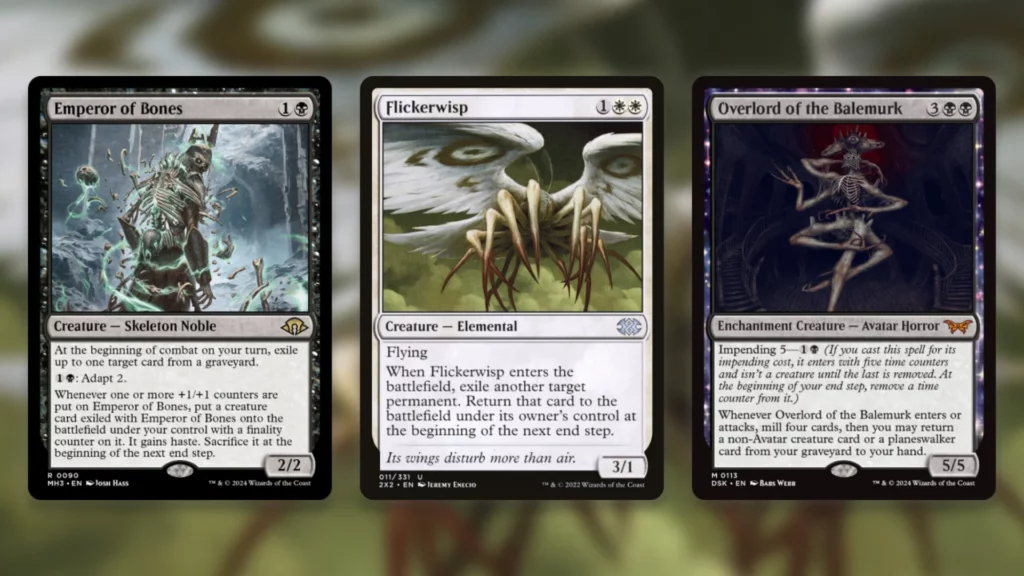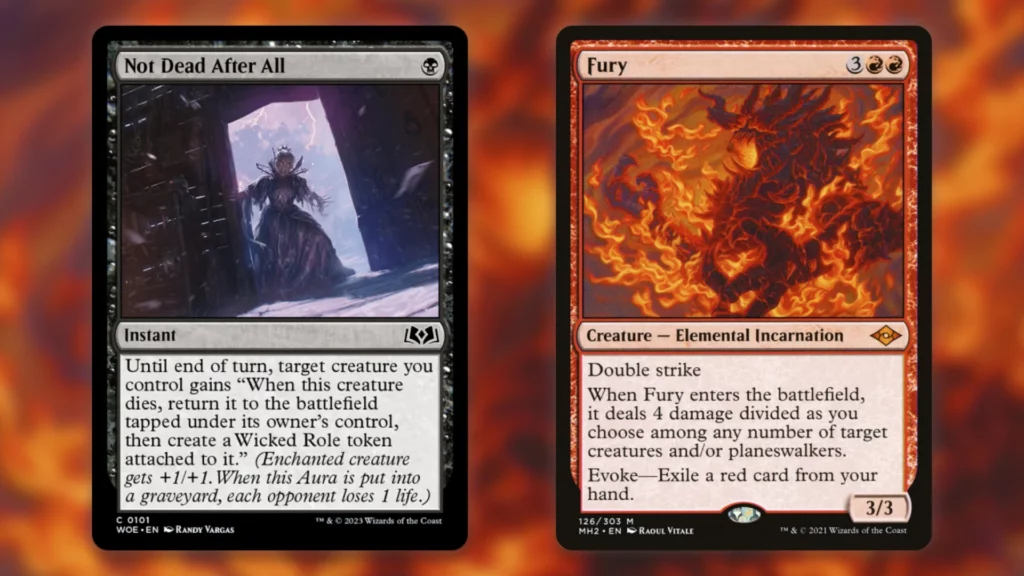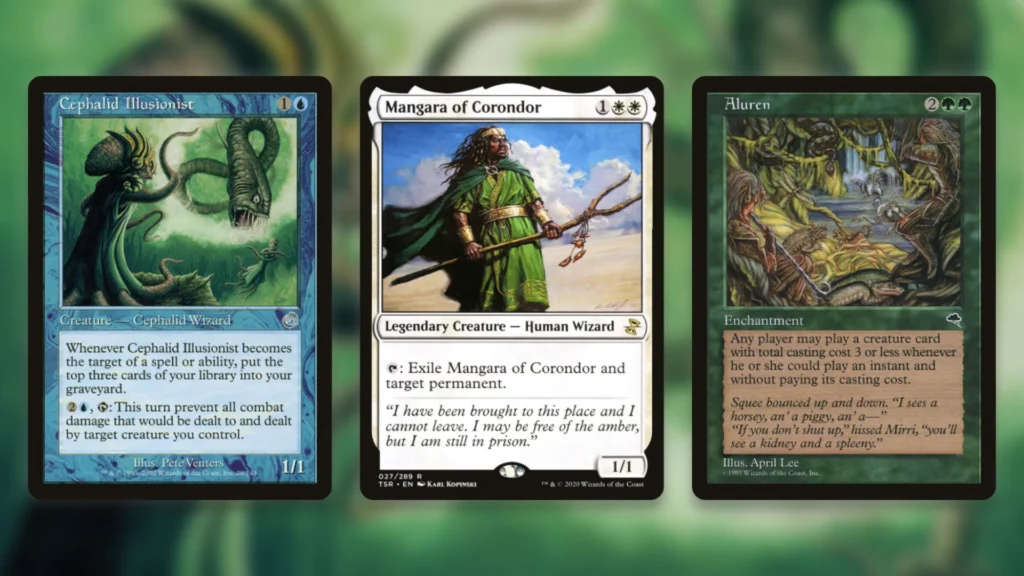One of the best, most interesting aspects of Magic: The Gathering is the culture that has developed around it. 32 years is a long time, and that sizable span has allowed for in-jokes and memes aplenty. Often, the players and deckbuilders who define the game leave their fingerprints behind in the form of deck names. Sometimes these are self-explanatory, like Esper Pixie. Other times they’re more cryptic, like recent MTG Modern menace Orzhov Sewers.
This deck has been doing well in the format for a while now, but players still aren’t entirely sure where the name comes from. In online forums, many theories are floating around, some far-fetched and some reasonable. Whatever the reasoning behind it, Orzhov Sewers is the latest in a long line of bizarre deck names in Magic. It’s great to see the tradition continue, indecipherable as it can be.
What On Earth Is Orzhov Sewers In MTG?

For some of you out there, that introduction alone will have been enough to confuse you. Never mind the nuanced MTG origins, what actually is Orzhov Sewers in the first place? If you don’t follow Modern, you’d be forgiven for not knowing. Orzhov Sewers is a relatively recent addition to the format, really coming into its own after the December ban announcement.
The deck also goes by Orzhov Midrange and Orzhov Blink, so you may have heard of it under one of those names. Basically, it’s a deck built around using Phelia, Exuberant Shepherd and Flickerwisp to blink value targets like Overlord of the Balemurk. It also plays disruptive creatures like White Orchid Phantom, which gives it game in a lot of different matchups. According to MTG Decks it’s a tier one strategy in Modern right now, which is nothing to sniff at in a Mox Opal world.
While some call this deck Orzhov Blink, others, like MTG Pro Todd Anderson, prefer Orzhov Sewers. Where exactly this name comes from isn’t 100% clear. There aren’t any cards in the deck that reference sewers in any way, except maybe Overlord of the Balemurk with its graveyard ‘dredging’ ability. Automatic_Tangerine1, sharing the confusion of many, started a thread on r/ModernMagic to get to the bottom of it.
Players gave several possible theories in the comments. Ce5b shared the Balemurk idea, adding “I legit thought it was cause of balemurk pulling shit out of the sewers (yard).” Rough_Egg_9195 had a simpler explanation. “It was called sewers because the guy who popularized the deck thought it sucked. Then he won two challenges back to back with it, people started playing it and the name stuck.”
Word On The Streets

Solid theories both, but it turns out these Orzhov Sewers run deeper than most MTG players realize. later in the thread, Pepperized quoted part of French Pro Gabriel Nassif’s stream.
“In ixalan draft, the BW archetype was vampire typal, but Gab often ended up in BW without any vampire synergies, and he named the archetype BW Sewer, and it stuck”
Pepperized
The exact date of this stream is unknown, but apparently Sewers goes back even further than Ixalan. Later in the thread CatatonicWalrus mentioned that the name Sewers “was definitely used in the early 2000s for a bad BW midrange deck and is a callback to that.” They also noted that the Orzhov Scam decks in Modern, which relied on the Grief/Not Dead After All engine, were sometimes referred to as Orzhov Sewers as well.
This would appear to be the origin point of the deck name. An obscure in-joke from a Pro Player over two decades ago has echoed through the ages. Intricate community-borne stories like this are the very fabric and lifeblood of Magic as a game. Interestingly, Orzhov Sewers also highlights an odd wrinkle with deck names, specifically regarding Wizards of the Coast.
During official events where players have been running Orzhov Sewers, coverage has referred to the deck as Orzhov Midrange instead. Star City Games’ Nick Miller did this at an event back in January, for example. While this was mainly an SCG decision, Miller did cite not upsetting Wizards as part of his reasoning behind not using the name in the thread.
This is a case of a popular community-given name for a deck being deliberately ignored by official coverage. We saw the same thing happen during the reign of Rakdos Scam in Modern, too. The exact reasoning behind this is unknown, but likely has something to do with professionalism on major broadcasts. Perhaps ‘Scam’ and ‘Sewers’ have enough negative connotations to outweigh the community benefits to using them live.
A Proud Tradition

Whatever the reasoning is, it’s a shame Wizards isn’t more willing to embrace the weird side of MTG deck names. It’s a historic part of the game, and one that goes back as long as players have been building decks and taking down tournaments.
Diving deep into the r/MagicTCG archives reveals plenty of odd deck names for popular strategies. HalvetyI000 mentioned Raisin Bran, an old moniker for Aluren combo decks in Legacy. Apparently this was such a polarizing matchup that some players would just concede two games in a row upon encountering it. Two concedes translates to ‘two scoops’ in Magic parlance, which is also the classic Raisin Bran cereal slogan, hence the name.
Weirdly, Magic players have a bit of a fixation with naming decks after breakfast cereals. Trix was a combo deck from back in 2000, relying on giving an opponent Illusions of Grandeur with Donate. Fruity Pebbles was an Enduring Renewal/Goblin Bombardment combo deck, and Cheerios was a Storm-style deck built around zero-mana artifacts. In a similar vein was Cephalid Breakfast, a still-relevant Legacy combo brew leveraging Cephalid Illusionist.
Beyond the cereal selection, there are plenty more iconic Magic deck names out there. You’ve got Nic Fit and The Rock as different Golgari variants, Team America as a Sultai brew, and Death and Taxes as a disruptive Orzhov deck. One could argue that Orzhov Sewers is simply a new take on this classic MTG strategy, which originally used a Mangara of Corondor/Karakas engine to guarantee inevitable victory.
So as you can see, Orzhov Sewers is part of a grand tradition that stretches back over three decades. As long as Magic is played, strange deck names will be part of it. I hope they will, anyway.
